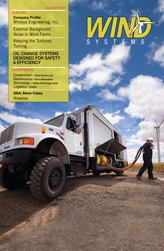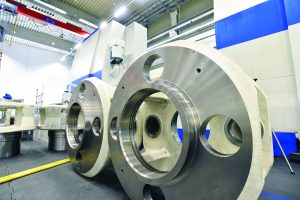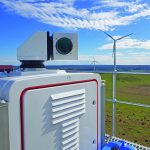In my earlier days of working in power generation facilities, it was common policy to give the new guy a bright red hardhat so that everyone else could look out for him and help him learn the ropes of the facility. Though such a policy may have inadvertently sanctioned the amusing initiation of a new recruit, its intention was to bring focus on an inexperienced member of the team. It was this visibility and guidance that helped the new employee avoid injurious situations until he became fully aware of his new surroundings.
In a literal sense, poor visibility can be the cause of many hazards and injuries in our industry. Wind technicians work with their hands, whether it is with rigging equipment, hand tools, or climbing a turbine. Part of the responsibility of providing maintenance services is to continuously find ways to improve the safe working conditions of technicians. Whether we work during dusk or dawn hours, in high traffic construction areas, or in dimly lit towers and hubs, the risk of injury due to poor visibility can increase significantly.
According to the Bureau of Labor Statistics (BLS), the agency that compiles OSHA reportable injuries, in 2010 more than 209,000 injuries to the arms and hands were reported in the U.S. private workplace sector. Of those reported injuries, nearly 55% resulted in more than six days away from work. While we may logically believe that many of these types of injuries occurred before someone was really thinking about their task or when they became tired at the end of a long day, the fact is that most were inflicted at least two hours after the start of work and during work periods of less than ten hours. This particular BLS statistic might suggest that workers should be wide-awake, but simply not focused on the task at hand. Even the day of the week seems irrelevant, as the number of arm and hand injuries reported in 2010 varied by less than 3% Monday through Friday.
Certainly not a surprise to anyone the most common causes of these types of injuries are carelessness, lack of awareness, boredom, distractions, and disregard for safety procedures. Often the technician places their non-dominant hand in the line of fire, increasing the risk of hand injuries. At one time the worker can be a wide-awake and unwitting participant in an unsafe act, yet at another they can avoid the very same actions that put them in harm’s way. Perhaps in the first scenario, the hand or arm just wasn’t conspicuous enough to immediately gain the attention of the technician.
Conspicuity refers to the ability of an object to draw attention to its presence, even when someone is not actively looking for it. We know for example how a vehicle’s headlights and brake lights make them conspicuous, or how a bright red hardhat brings our attention to a new employee. When we are casually looking around, sometimes an object will jump out of the background. Since getting technicians to notice where their hands and arms are placed can literally be a matter of life and death, creating an up tower work environment where arms and hands become more conspicuous, and where hazards can be found, will provide a real safety advantage.
High visibility clothing has been around since the 1970’s and has become commonplace in today’s wind construction industry. During construction or major maintenance high visibility vests are worn as a means to deliberately make the workers conspicuous to others. For many years red was considered the most conspicuous color but recent research has established that the most conspicuous colors are yellow and yellow-green, sometimes called lime yellow. Because the color-transmitting cones in our eyes do not work well in the dark, some colors are easier for us to see at night. We are most sensitive to greenish-yellow colors under dim conditions, making lime shades easiest to see in low lighting. This led to a study that found yellow-green fire engines have far fewer accidents than red ones, and now communities across the country are replacing the traditional red fire truck.
Considering the outcome of such studies, wearing clothing that is inconspicuous may be a leading contributor to many hand and arm injuries in our industry. Wearing black gloves that are close in color to the equipment we work on, for example, does little to draw sensory perception to where the hands are placed. Brightly colored gloves or those with bright colored fingertips can increase technician awareness of hand safety while working. In many safety-critical situations, it is vital that a viewer notice a sign or other object in order to avoid injury. However, words and numbers are not good conspicuity devices because reading text takes good acuity and mental effort. Color on the other hand, is easily and quickly perceived without the cognitive effort required in reading and can be perceived in peripheral as well as in central vision. Color-labeling what is otherwise an inconspicuous hazard can bring attention to pinch points, high voltage connections, and sharp edges.
Being left to work with some engineered hazards on our turbines, the least we can do is identify them and make them as conspicuous as we can.



































